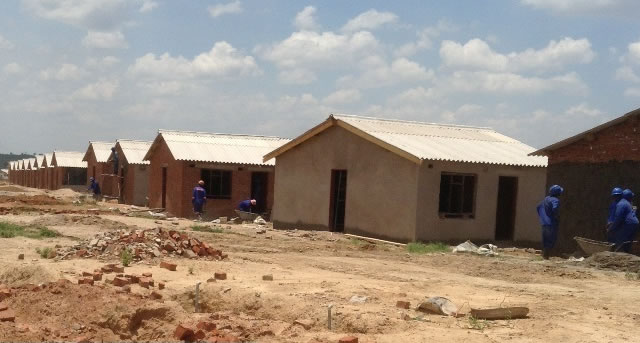EDITORIAL COMMENT: Housing projects must be affordable to the majority

Access to decent housing is one of the biggest challenges for most Zimbabweans, particularly low-income earners in urban areas.
High cost of residential stands, lack of affordable mortgage finance, high unemployment and low disposable incomes are some factors that have conspired to make it difficult, nay impossible, for ordinary workers to own reasonable homes in towns and cities countrywide.
While the primary concern lies with the individual, the government has also taken it as one of its obligations to create conditions favourable for low-income earners to own a house.
In fact, among the socio-economic rights provided for in the new constitution is that enunciated in Section 28 enjoining all government institutions at every level, that is both central government and local authorities to take “reasonable measures, within the limits of their resources,” to enable every person to have access to adequate shelter. This provision is reinforced by Section 74, which states: “No person may be evicted from their home, or have their home demolished, without an order of court made after considering all the relevant circumstances.”
It goes without saying that the government does not have resources to build houses for the people, even the poorest of the poor, but has the land which it sells to individuals and various interested groups to then construct homes. Through institutions like the National Social Security Authority, the government also contributes towards the housing provision agenda.
It also reaches out to private institutions at home and abroad for partnerships pursuant to that as we reported yesterday.
The agreement that the government has signed with China Civil Engineering Construction Corporation (CCECC) to build 320,000 houses in Harare and Bulawayo holds tremendous potential in delivering houses to residents of both cities. Details of the deal have not been given at this early stage as to which income group would be catered for and how many units for which town but 320,000 is a substantial number of houses to be delivered under one facility and will go a long way towards meeting the national housing backlog of around 1,5 million units.
We say this because there are numerous other initiatives geared towards easing the housing shortage such as the planned $2 billion Magamba 2015 Housing Project in Harare and dozens of others driven by private companies in the capital and other urban centres nationwide. In the same breath we will not overlook the fact that some residents are taking mortgages, especially through existing building societies. Also, NSSA is working on launching a building society which will roll out what promises to be a huge mortgage initiative that has more flexible requirements and offers more money than those on the market now.
Therefore, as part of the broader mix of initiatives to provide housing to the people, the CCECC deal is most welcome.
Briefing journalists after meeting a CCECC delegation in Harare on Tuesday, Local Government, Public Works and National Housing Minister Saviour Kasukuwere said the projects showed practical implementation of Zim-Asset and the 10-Point Plan enunciated by President Mugabe in September last year.
“We’re happy that we’re starting on a positive note. Now we’re moving to the specifics to get the projects running, in housing, construction, sewer,” said Minister Kasukuwere.
He said the projects would be implemented under the build-operate and transfer (BOT), loan facility and special economic zones.
“We need high rise buildings that don’t eat into our land and our discussion centred on issues like skills transfer,” said Minister Kasukuwere, adding that the bulk of the housing units would be constructed in Harare and Bulawayo with other towns earmarked for their share.
We are encouraged by the options under the CCECC facility, that home seekers can secure loans and build houses of their choice, benefit under BOT and the special economic zones concept.
We are most interested in the BOT and the loan facility CCECC will make available. The country has had similar arrangements before that have not gone as much as we want in terms of delivering houses to the low-income group because of affordability issues.
It is with this in mind that we encourage the government and its partner CCECC to come up with an affordable housing scheme that, however, doesn’t leave the financier unhappy. CCECC is obviously not here to prosecute an altruist agenda, but to get a return on their investment. At the same time, home-seekers must be able to pay for the houses with minimum chances of them defaulting. We look forward to that equilibrium being achieved. If we don’t, then the country would fail to meet the target it stipulated under Zim-Asset of delivering 300,000 houses to the people by 2018. More unfortunately we would have failed to provide shelter to the masses beyond Zim-Asset.









Comments